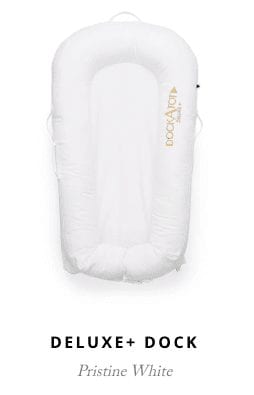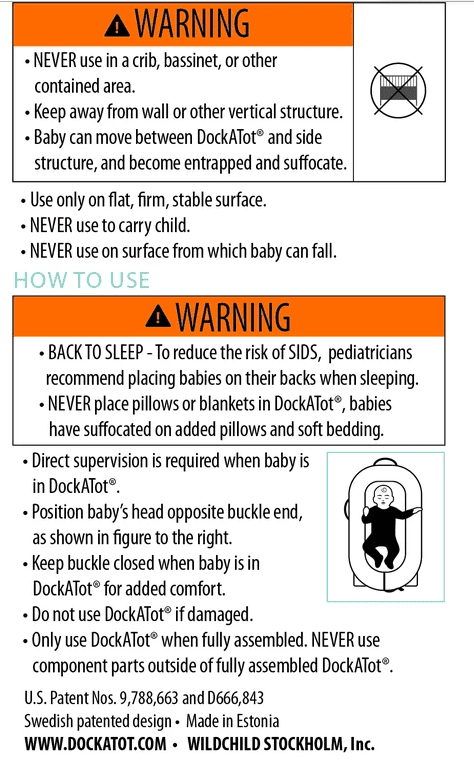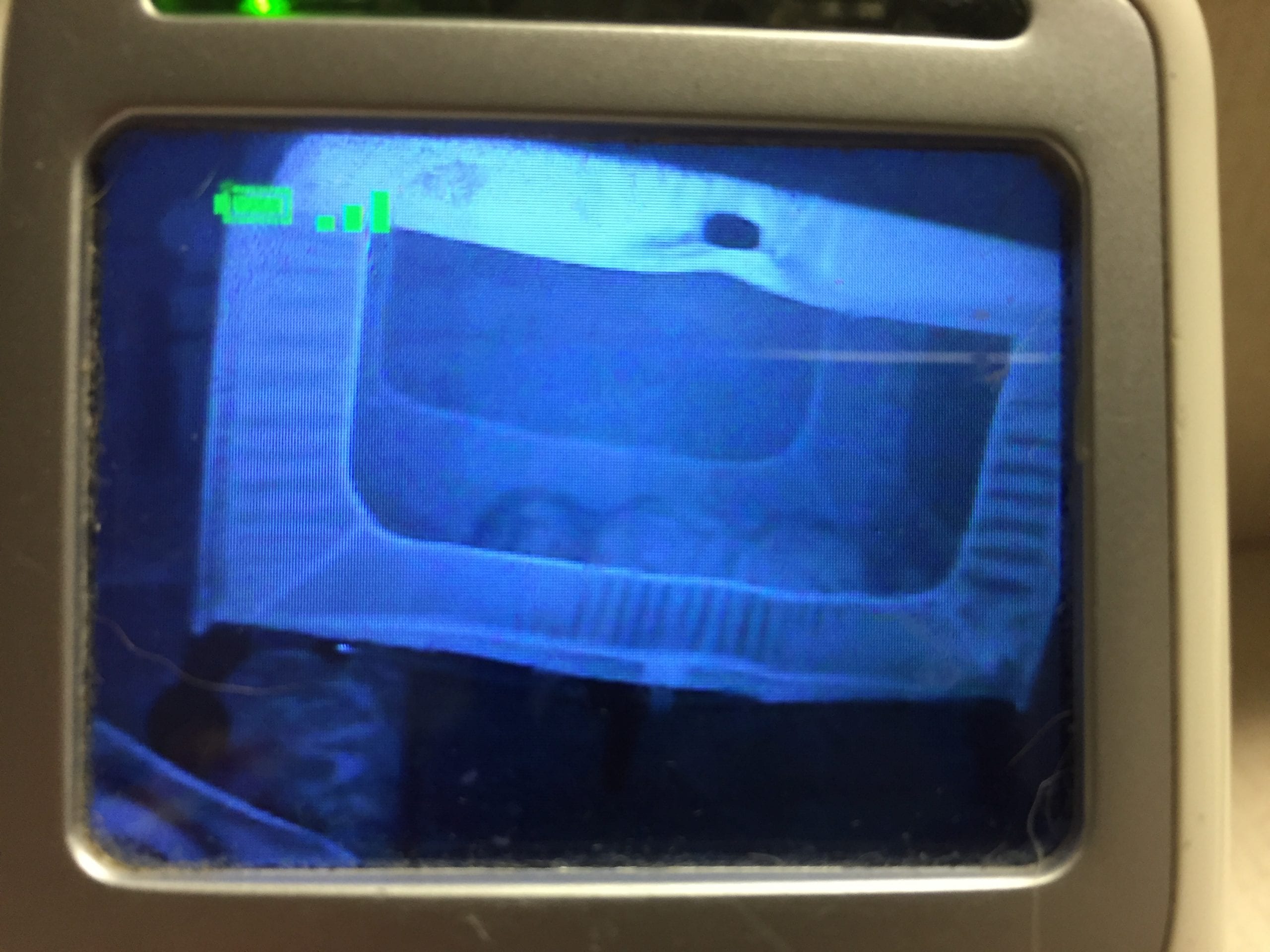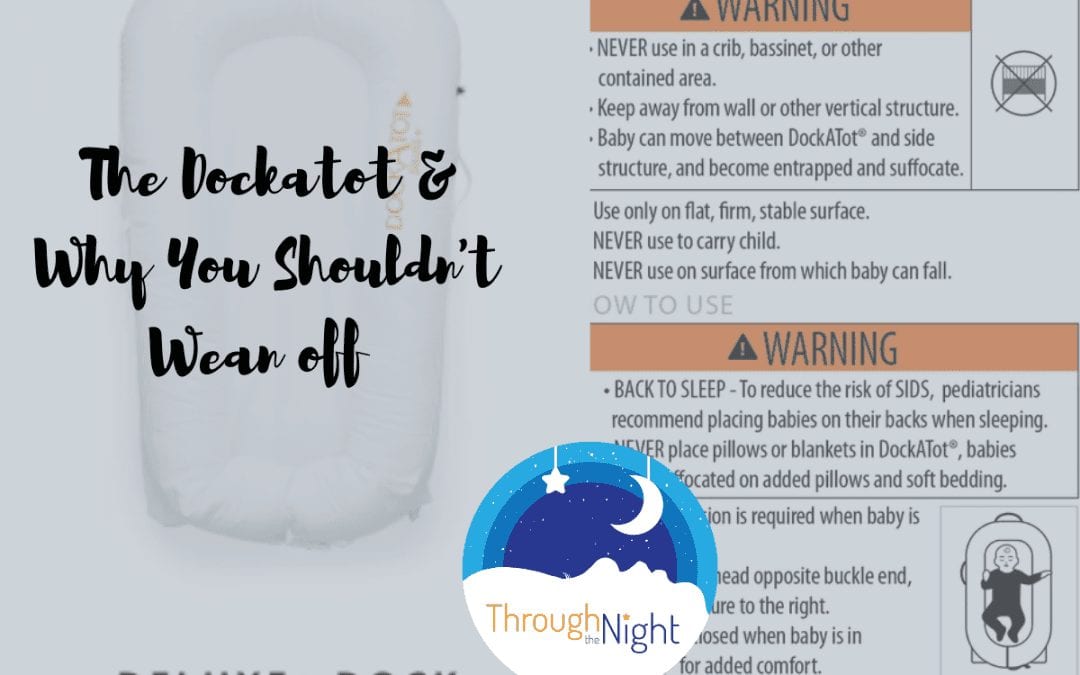I remember the first time I heard of the new “must have” baby shower item for new moms – The Dockatot. It was whispered about in all the mom Facebook Groups and shared on Instagram as the ultimate item for a baby, ages 0-8 months. And gasp…the Dockatot is lightweight, portable and the filling materials are sourced safely and organically. And best of all, I heard the dock offers increased stretches of baby sleep!
My two infants were small both before the Dockatot came onto the scene and during the days of the Rock and Play fame (also to note, these have been recalled, so please do not use these products). Therefore, I never personally used the Dockatot, but boy or boy do I have an opinion.
As a Baby & Toddler Sleep Strategist, I get asked about the Dockatot all the time and how and why parents should wean off of their use. It’s time to breakdown the “Ultimate Stage 1 Docking Station” or Dockatot and tell you why you shouldn’t wean off using it for when your baby sleeps.
Let me say it again, YOU SHOULDN’T WEAN OFF OF THE DOCKATOT. Instead, you should quit using it immediately. Friends, unfortunately, it’s time to go Dockatot-cold-turkey.
If you’d prefer to watch my video lesson on the Dockatot, you can find it here.
What is it?
A Dockatot is a small nest-like station for your baby, or com call it a “baby container” or positioner, that many people mistakenly believe is for use when babies are sleeping.

It creates a spot that lets baby be contained, and allows space for the baby to rest, lounge, play, cuddle and do tummy time.
From their website dockatot.com: “All materials used to make both the Grand and Deluxe docks are sourced from world-leading suppliers of materials and have non-toxic properties, meeting Standard 100 Class 1 by OEKO-TEX, which tests for numerous harmful substances in textile products.”
Well then, when should babies use it?
From the Dockatot website:
“Can I use my dock in a crib, bassinet and/or play yard?
No. DockATot should not be used in a crib, bassinet or play yard. The Consumer Product Safety Commission has cautioned that babies should be placed in a bare crib without any additional bedding, blankets or pillows. Furthermore, there is a concern that a young infant who can scoot or crawl out of the dock might get entrapped between the side of the crib, bassinet or play yard and the dock.”

My advice? Use it for supervised playing, lounging, tummy time, and get diaper changes, etc. But…not too much. I recommend floor and tummy time without baby containers for increased gross motor development opportunities (baby using their own muscles and body).
A towel or blanket on the floor or under a beautiful tree is a better option, IMHO.
When is the Dockatot NOT to be used?
Do not use the Dockatot during any periods of sleep (yours or theirs) or when a caregiver is not consistently supervising.
I know, this is a huge bummer, but read on – – because I have ideas on how to swap it out for something safe for your baby.
According to the AAP – “The AAP believes sleep positioners represent a risk to sleeping babies. The AAP also recommends that parents never use pillows, stuffed animals, heavy blankets or other soft or puffy items in babies’ cribs. Soft bedding can end up over their face and block their breathing. Babies should have their own crib, with a firm mattress and a fitted sheet.”
There is no good/safe way to wean off using the Dockatot for sleep besides cold-turkey.
What can parents use instead of the Dockatot?
1) Use swaddles (arms in or out) depending on age and whether they are rolling. If your baby is rolling (or attempting), it’s time to unswaddle or use the kind that has the swaddle wrap around the belly/trunk of the baby, but not over the arms, like this Halo Swaddle. This one can be used arms in and then out as they begin to roll.
2) Merlin Suit – This sleep suit has a slight compression feel and can soothe smaller babies that “break out” of traditional swaddles. This can be used as long as baby is not rolling or attempting to roll.
3) Position baby near crib walls/corner in a safe sleep environment such as a Pack and Play or crib, rather than in the middle of the crib. This gives the feeling of a close, nearby nestlike sleep space, but does not pose the hazards of a Dockatot. Below is a photo of my youngest daughter sleeping “on the wall” of the Pack and Play while traveling. This is normal for kids to end up sleeping near an edge/corner, so starting them there can be helpful in this transition.

The Safe Sleep Recommendations as per the AAP (aap.org) are always worth repeating:
“AAP recommendations on creating a safe sleep environment include:
- Place the baby on his or her back on a firm sleep surface such as a crib or bassinet with a tight-fitting sheet.
- Avoid use of soft bedding, including crib bumpers, blankets, pillows and soft toys. The crib should be bare.
- Share a bedroom with parents, but not the same sleeping surface, preferably until the baby turns 1 but at least for the first six months. Room-sharing decreases the risk of SIDS by as much as 50 percent.
- Avoid baby’s exposure to smoke, alcohol and illicit drugs.”
As always, if you need any help working through this transition, or other Baby & Toddler Sleep Strategy, please reach out.
Sarah Branion
PS – When you’re ready, there are 4 ways I can help with Baby & Toddler Sleep
1 – Download your copy of the Baby Sleep Cheatsheet
2 – Take the Online Class: 5 Simple Steps to Predictable Sleep
3 – Apply to be a Private Client
4 – Are you an employer? Call me to discuss programs to help your team get rest as they return to work after family leave

